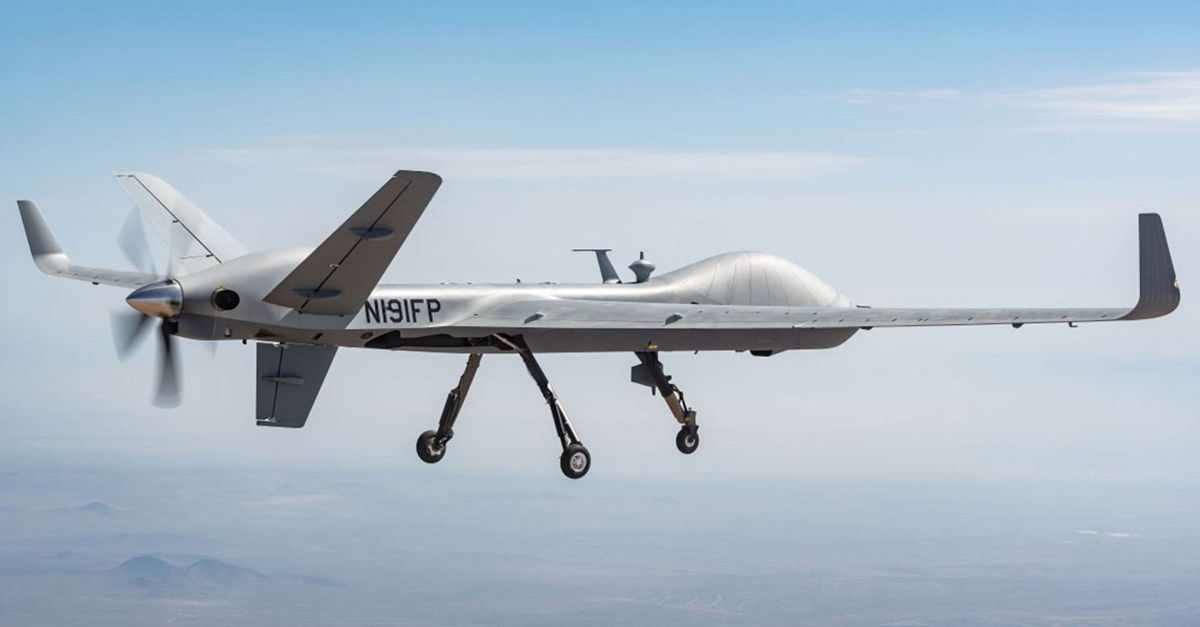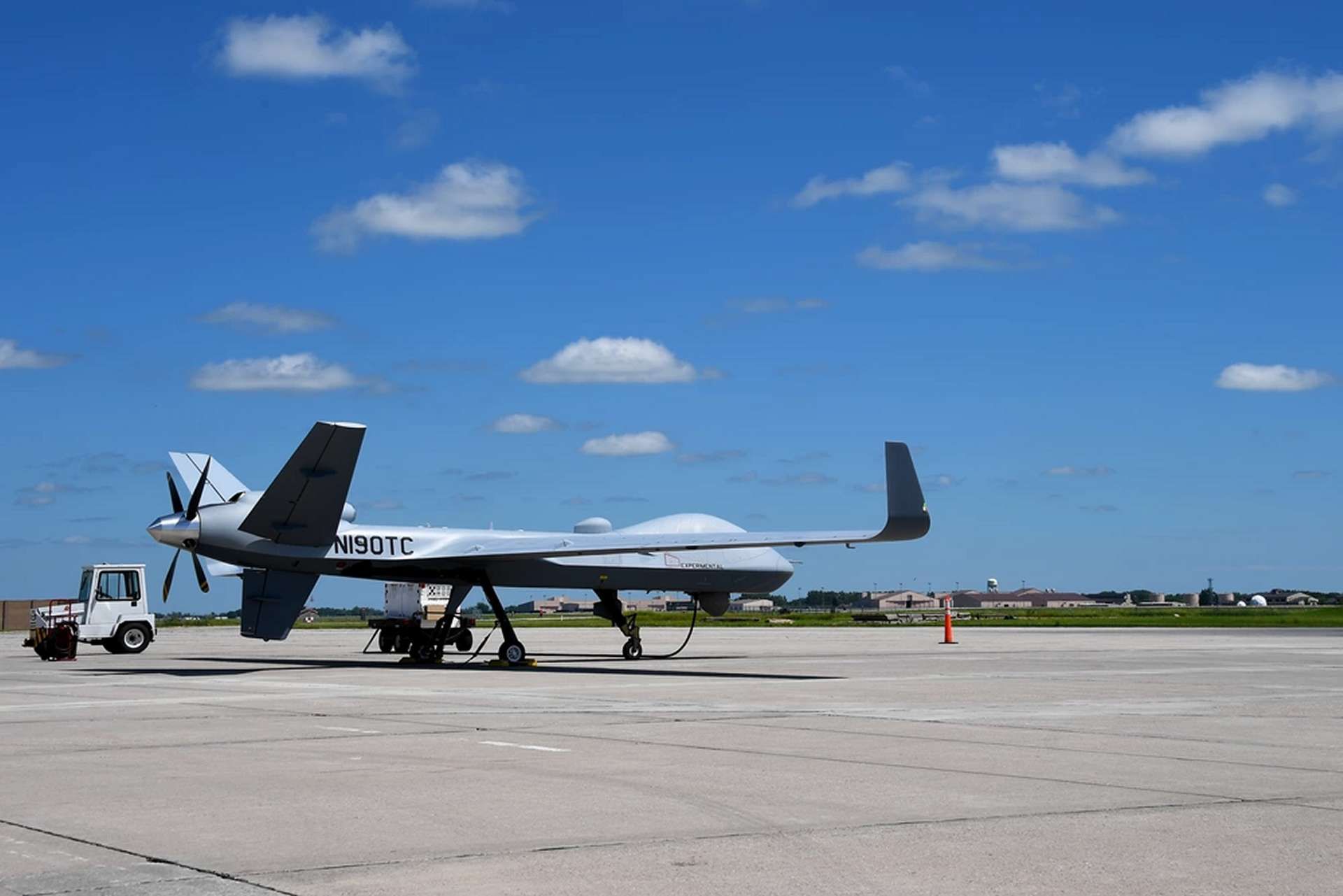Breaking News
General Atomics tests an MQ-9B SkyGuardian equipped with Canada’s Pratt & Whitney PT6 engine.
On July 15, 2024, General Atomics Aeronautical Systems (GA-ASI) conducted the first flight of their MQ-9B SkyGuardian Remotely Piloted Aircraft (RPA) equipped with a PT6 E-Series model turboprop engine from Pratt & Whitney Canada. This 44-minute flight was observed by representatives from both GA-ASI and Pratt & Whitney, focusing on the aircraft's handling and acceleration.
Follow Army Recognition on Google News at this link

General Atomics Aeronautical Systems (GA-ASI) conducted the first flight of their MQ-9B SkyGuardian Remotely Piloted Aircraft (RPA) equipped with a PT6 E-Series model turboprop engine from Pratt & Whitney Canada, which provides a 33 percent increase in power compared to the current MQ-9B engine. (Picture source: GA-ASI)
GA-ASI President David R. Alexander described this event as a notable milestone for MQ-9B SkyGuardian and SeaGuardian customers, especially for missions requiring additional power. He highlighted the potential advantages for customers opting for the Pratt & Whitney engine, including lower sustainment costs due to the Time Between Overhauls (TBO) and access to over 50 maintenance and overhaul facilities globally.
The MQ-9B SkyGuardian is a remotely piloted aircraft with extended endurance, allowing it to remain airborne for over 40 hours, making it suitable for long-duration intelligence, surveillance, and reconnaissance (ISR) missions. The aircraft can carry multiple payloads, including multi-mode radar, electro-optical/infrared sensors, and signals intelligence systems. These capabilities enable it to perform various missions, such as anti-submarine warfare (ASW), electronic warfare (EW), and environmental monitoring.
Additionally, the MQ-9B features an Automatic Takeoff and Landing Capability (ATLC), which facilitates operations from shorter airfields and increases deployment flexibility. It can carry up to 2,150 kilograms of payload across multiple hardpoints, supporting various weapons and sensors. The aircraft's design includes advanced automation and artificial intelligence, allowing integration with other unmanned and manned platforms in multi-domain operations. These features enable the MQ-9B to operate in high-threat environments and support both military and civilian missions effectively.
The United Kingdom has started receiving deliveries of the MQ-9B, with contracts also in place with Belgium, Canada, Taiwan, and the U.S. Air Force for the Special Operations Command. The Japan Coast Guard is using the MQ-9B for maritime operations, and the Japan Maritime Self-Defense Force has chosen it for its Medium-Altitude, Long-Endurance (MALE) Remotely Piloted Aircraft System Trial Operation Project. The MQ-9B has also participated in various U.S. Navy exercises, including Northern Edge, Integrated Battle Problem, and Group Sail.

The MQ-9B features an Automatic Takeoff and Landing Capability (ATLC), which facilitates operations from shorter airfields and increases deployment flexibility. (Picture source: US DoD)
The first flight of the MQ-9B SkyGuardian with the PT6 E-Series engine marks a significant development in enhancing the capabilities and performance of GA-ASI's RPAs, providing operational advantages such as a 33 percent increase in power compared to the current MQ-9B engine. The PT6 E-Series by Pratt & Whitney Canada, recognized for its reliability, introduces a dual-channel integrated electronic propeller and engine control system, which aims to simplify pilot operations through features like auto start/stop and is expected to improve the performance of future MQ-9B missions.
A notable feature of the PT6 E-Series is its focus on digital intelligence, which supports advanced engine health monitoring and proactive maintenance strategies. This design helps in reducing scheduled maintenance times by up to 40 percent, potentially increasing aircraft availability and operational efficiency. The engine's design is intended to deliver performance with precision and efficiency, aimed at enhancing overall functionality under diverse flight conditions without frequent manual adjustments.
The PT6 E-Series by Pratt & Whitney Canada includes advanced turboprop engines like the PT6E-66XT and PT6E-67XP. The PT6E-66XT model powers Daher’s TBM 960, while the PT6E-67XP is used in the Pilatus PC-12 NGX. Both models offer digital engine health monitoring, aiming to reduce maintenance times and improve operational efficiency through advanced predictive and proactive support capabilities, allowing for consistent performance across various altitudes and temperatures.

The MQ-9B SkyGuardian is a remotely piloted aircraft with extended endurance, allowing it to remain airborne for over 40 hours, making it suitable for long-duration intelligence, surveillance, and reconnaissance (ISR) missions. (Picture source: GA-ASI)


























